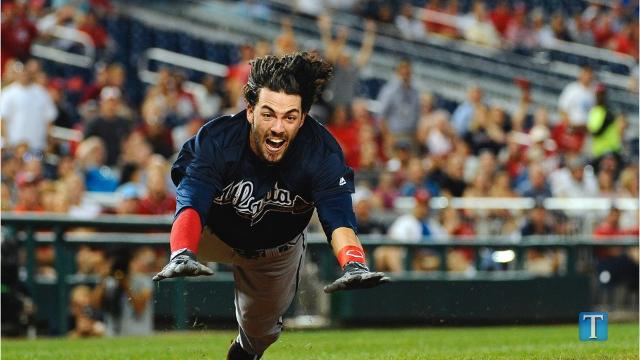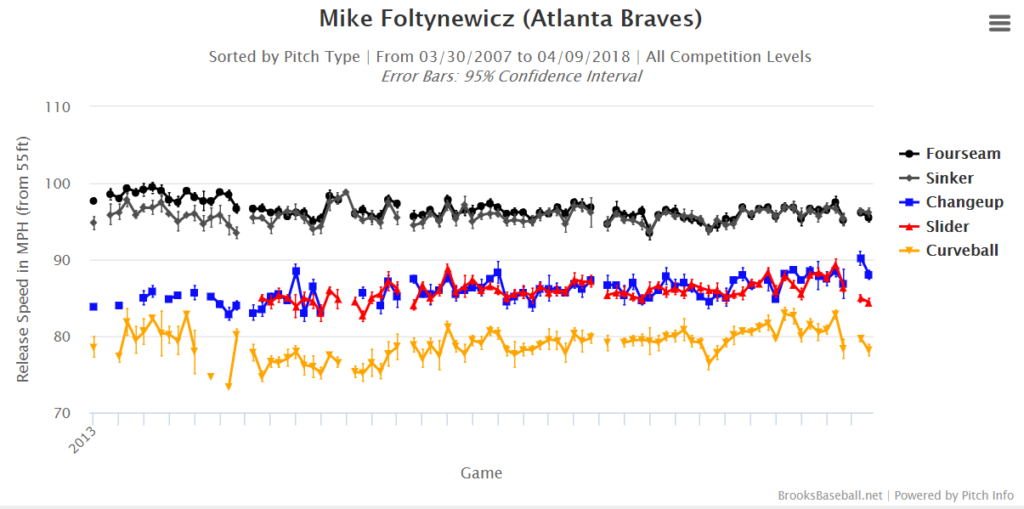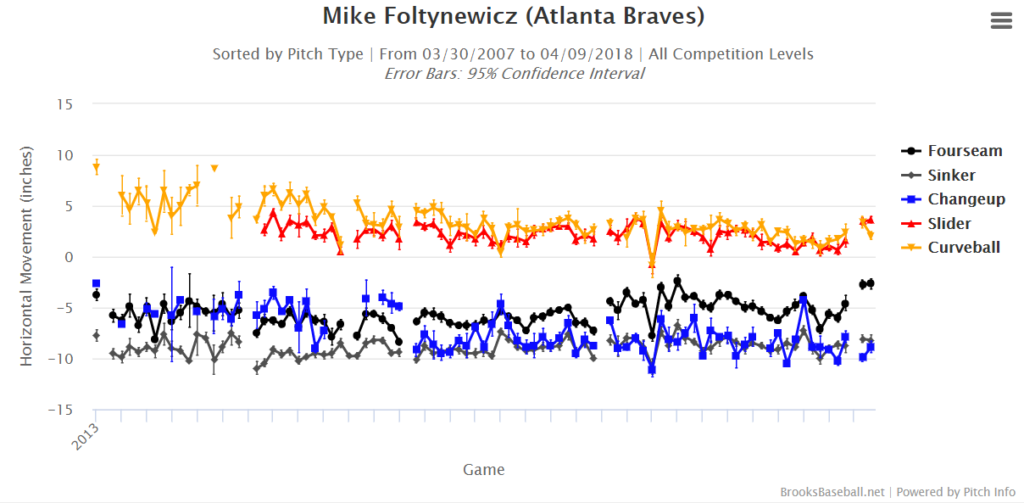Sean Newcomb and Mike Foltynewicz Up to New Things

Early season baseball is fun. We get to find out that Shohei Ohtani was sandbagging us in Spring Training, plus games delayed by snow and more day games than you’ll find in July. There’s also that adjustment period of remembering that Andrew McCutchen playing for the Giants means that he does not play for the Pirates. I’ll stop expecting him in Pirates games eventually.
We also have a host of pitchers sporting new grooves, invigorated by a fresh arm and squeaky clean ERA, and attempting to incorporate the work they did in the offseason to become the next big thing. Major Leaguers are always working on things and pitchers often fool around with new pitches in Spring Training. They sometimes stick and become part of an improved repertoire. Other times, they disappear. But two talented members of the Atlanta Braves, Sean Newcomb and Mike Foltynewicz, aren’t really sporting new pitches, just different pitches, with success so far.
This post started with a look at pitchers who have started games in both the 2017 and 2018 seasons. I compared velocities, horizontal movement, verticle movement, and usage rates for all the variations of fastballs, sliders, changeups, and curveballs. I found some interesting things! Unfortunately, others found them before me. For instance, Jeff Sullivan posted on Friday about Aaron Sanchez’s new changeup. And Michael Beller noticed Carlos Martinez’s new cutter last Thursday. And just 10 hours before drafting this post, Derek Albin wrote about Sonny Gray’s curveball usage. And it’s not exactly breaking news that Stephen Strasburg, Trevor Bauer, and Lance McCullers have good stuff. So we’re conveniently left with two Braves pitchers off to hot starts using new tricks.
First, Mike Foltynewicz
The big righty has long tantalized Braves fans with his talent. Former manager Freddie Gonzalez once said Folty reminded him of Jake Arrieta.
…you see how well Arrieta’s done the last three years, and you look at his first two years in the big leagues. And you’re watching these guys pitch tonight, and it’s like, somewhere down the line Jake figured it out, how to pitch. And I think that’s where we are with Folty
–Fredi Gonzalez, August 2015
It was an interesting comparison then, and it’s more interesting now that Folty has two pedestrian seasons under his belt. Arrieta never found his groove in Baltimore, sporting a 5.46 ERA across 69 games (63 starts) for the Orioles. Folty entered the year with a 4.85 ERA in 69 games (65 starts) for the Braves. Each of Arrieta’s next three years earned Cy Young votes, including a first-place finish in 2015.
Now, to the reason for optimism, buried in some charts from Brooksbaseball. The first basically shows you that Folty throws hard. In fact, he’s got a top 10 fastball this year in terms of velocity. You should also notice in this chart that his pitch mix stayed pretty much the same from 2013 when he entered the league until those last two dots on the right (his two 2018 starts).
Our next chart shows Folty’s horizontal movement. Here we see that the Fourseam pitch is coming in a bit straighter than in the past. Normally, that’s not ideal. But for Foltynewicz, he’s trying to create separation from his changeup. Changeups are supposed to A) be about 10 mph slower than fastballs, and B) move more than fastballs.
But mostly, my optimism is tied to the fact that he’s using the changeup more this year, up over 10% of the time (5% more than last year) for the first time since he was a rookie in 2013. Foltynewicz hasn’t thrown it much in the past because it hasn’t been very effective. Hitters smoked the pitch last year with an average of .444 against it. This year, hitters are 0 for 4 with two strikeouts. He’s over halfway to his changeup strikeout total from a year ago and he’s just 2 starts into the season.
So Folty still throws 95+, but now he apparently has a changeup that he’s differentiated from his fastball in a way that he hadn’t really before.
Sean Newcomb
The only thing that was ever holding Newcomb back was his ability to throw strikes. His stuff and strikeout rates were always great in the minors, but the 5 walks per 9 he’s averaged kept people pessimistic. The easy post here is that Newcomb has improved his walk rate and found success. While that’s true (his 3.5 walks per 9 would be his best mark ever in pro ball), it’s also not the entire story.
Newcomb went to the same school as Foltynewicz this winter and learned a changeup. The new changeup doesn’t show up in velocity. In fact, Newcomb’s change piece could stand to shave a few mph.
We could go through the exercise of analyzing movement on Newcomb’s changeup, but the general story is the same as Folty. It’s a relatively straight changeup, but it’s slightly more different than his fastball than it was a year ago and he’s throwing it more often (Up 10% to a total of 20% of his pitches), though it’s not a terribly effective pitch: hitters have 5 singles in 10 at bats with it. This, after hitters clipped it at a .388 mark last year.
But with Newcomb, the option of a third pitch will help keep hitters off of his fastball/curve combo. Something tells me that he’ll abandon this early season experiment if the pitch continues to get hit at a .500 clip, but the results against the Rockies on Sunday, in which he threw 30% changeups were good: 6 shutout innings with 9 strikeouts and no walks at Coors Field. It was the first time he’s been above 22% changeups in any game at the Major League level, so while it’s not a new pitch, Newcomb is using it in a new way.
-Sean Morash














